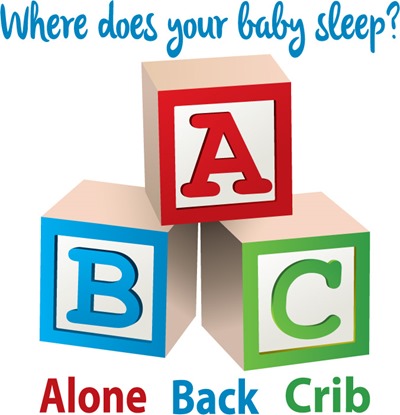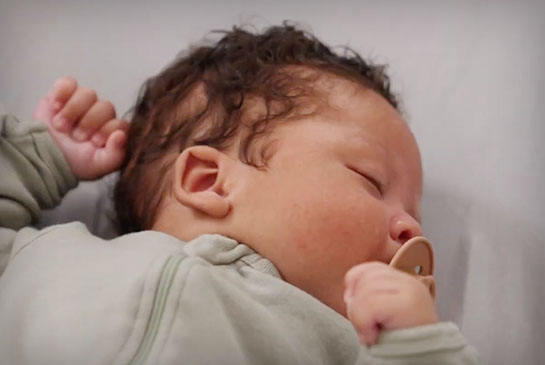Patient Education A to Z
Safe sleep for babies
A safe sleeping environment for your baby
A safe sleeping environment reduces your baby’s risk of Sudden Infant Death Syndrome (SIDS), which is the number one cause of death between the ages of one month and one year.
Learn the 6 steps for creating a safe sleeping environment for your baby – from birth to one year

- Put baby to sleep ALONE in his/her crib or bassinet. Do not sleep with baby, and do not let other children sleep with baby.
- Put baby to sleep on his/her BACK for every sleep. Doctors know “Back to Sleep” will NOT increase baby’s risk of choking.
- Use a CRIB or bassinet to sleep baby. Firm crib mattresses with fitted sheets are the safest place for baby to sleep. Do not place baby to sleep in an adult bed, couch, recliner or swing.
- Do not place any objects in baby’s crib or bassinet, such as pillows, blankets, bumpers, stuffed animals or other soft objects.
- Do not dress baby too warmly when sleeping. If you are comfortable, baby is comfortable.
- Do not allow anyone to smoke ANYTHING around baby.
Breastfeeding your baby may reduce the risk of dying while sleeping.
Safe Sleep Baby program information is from the Child Abuse Prevention Care Center of Sacramento.
Co-rooming vs. co-bedding
Sharing the same room with your baby is encouraged. This is called “co-rooming,” which may decrease the risk of SIDS by as much as 50 percent. Remember, co-rooming is good, but co-bedding is not — your baby needs to be in its own crib or bassinet.


